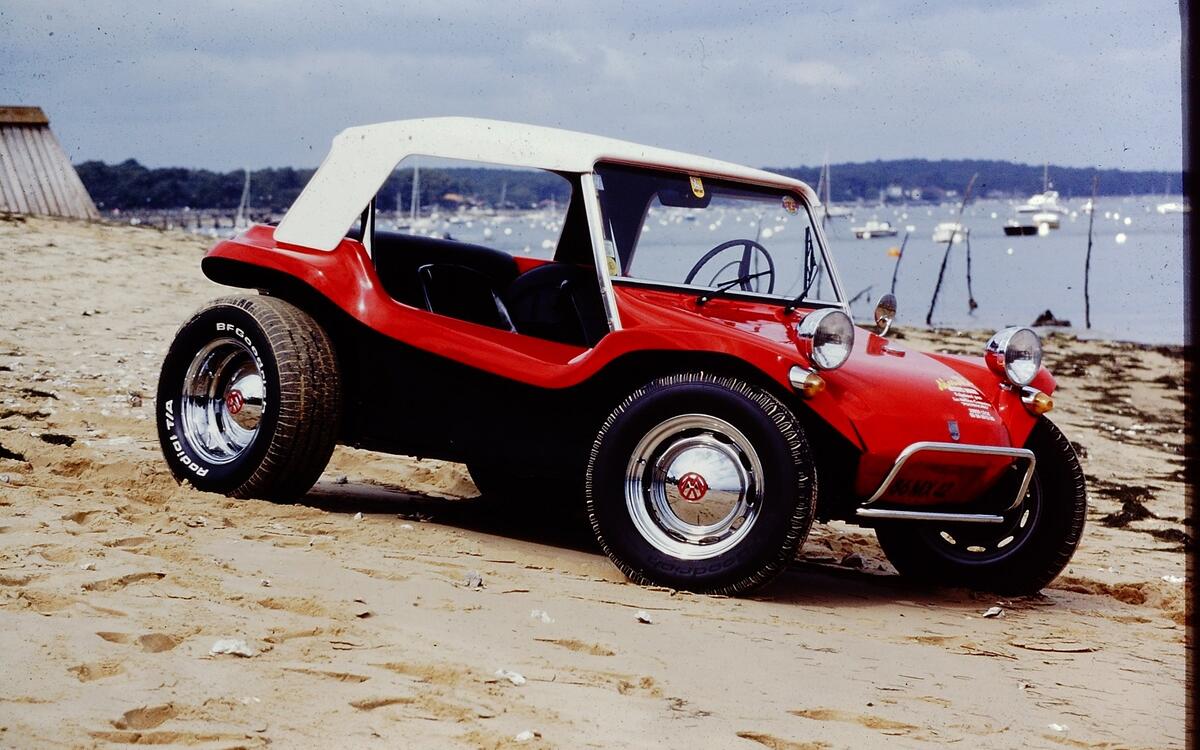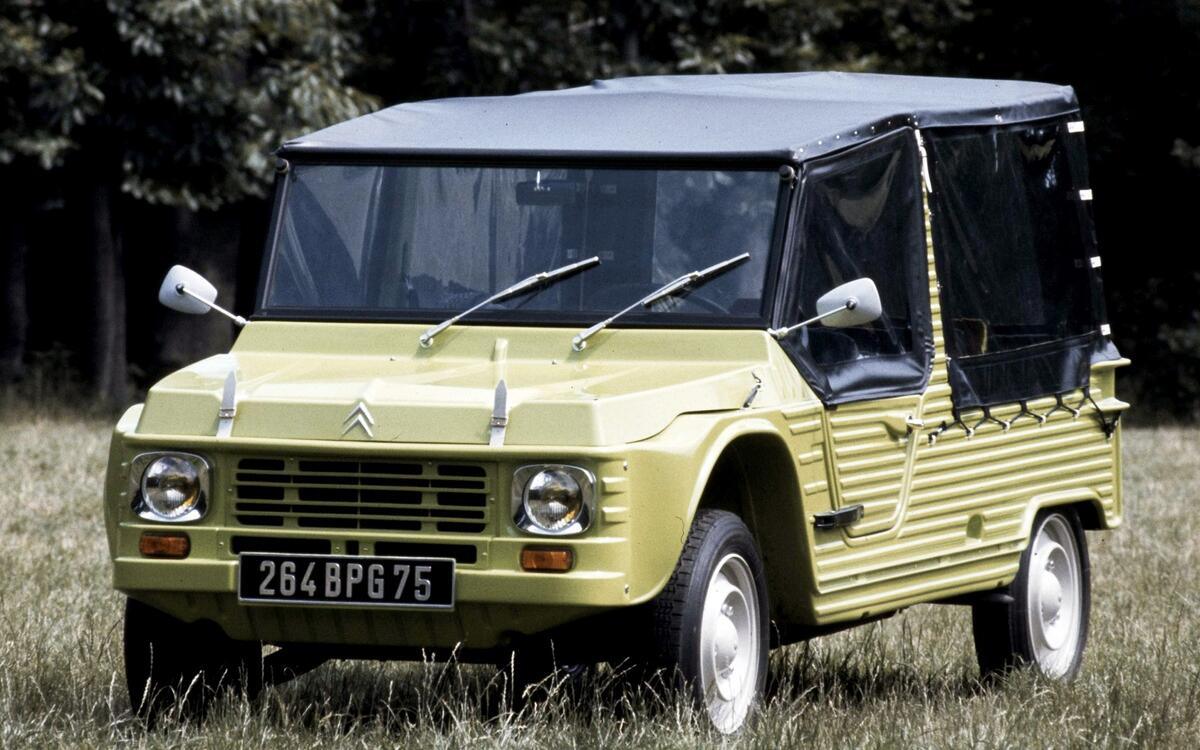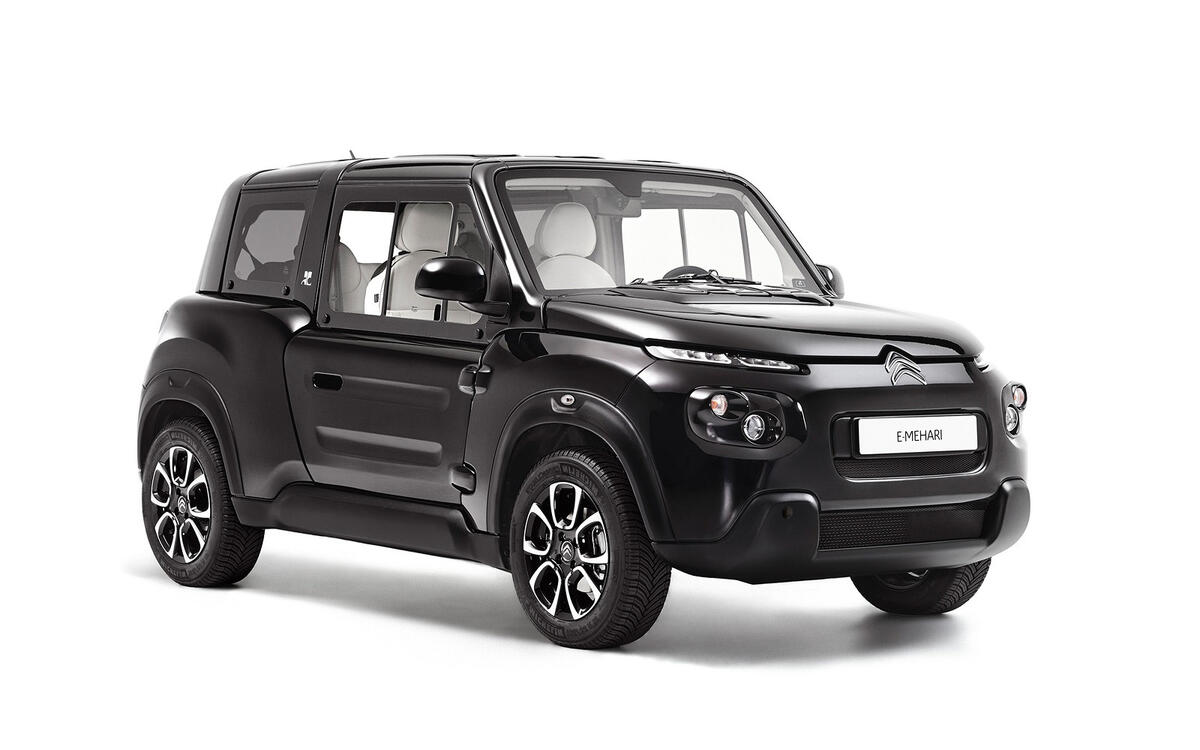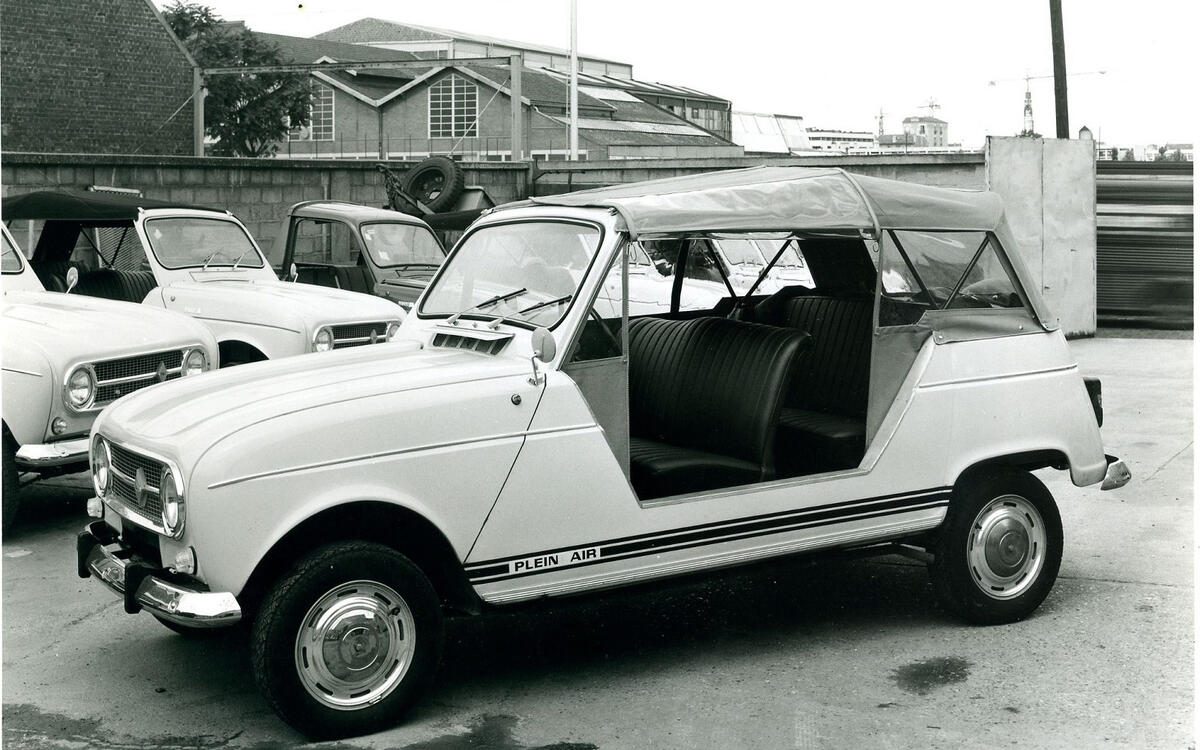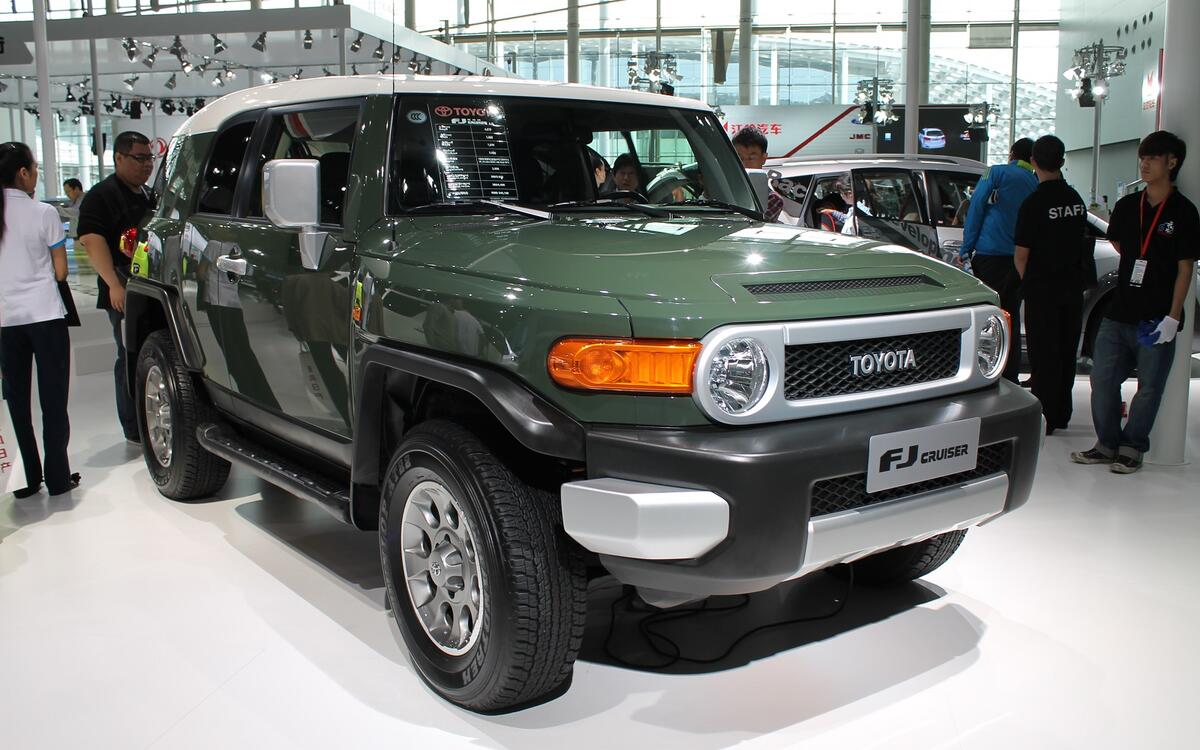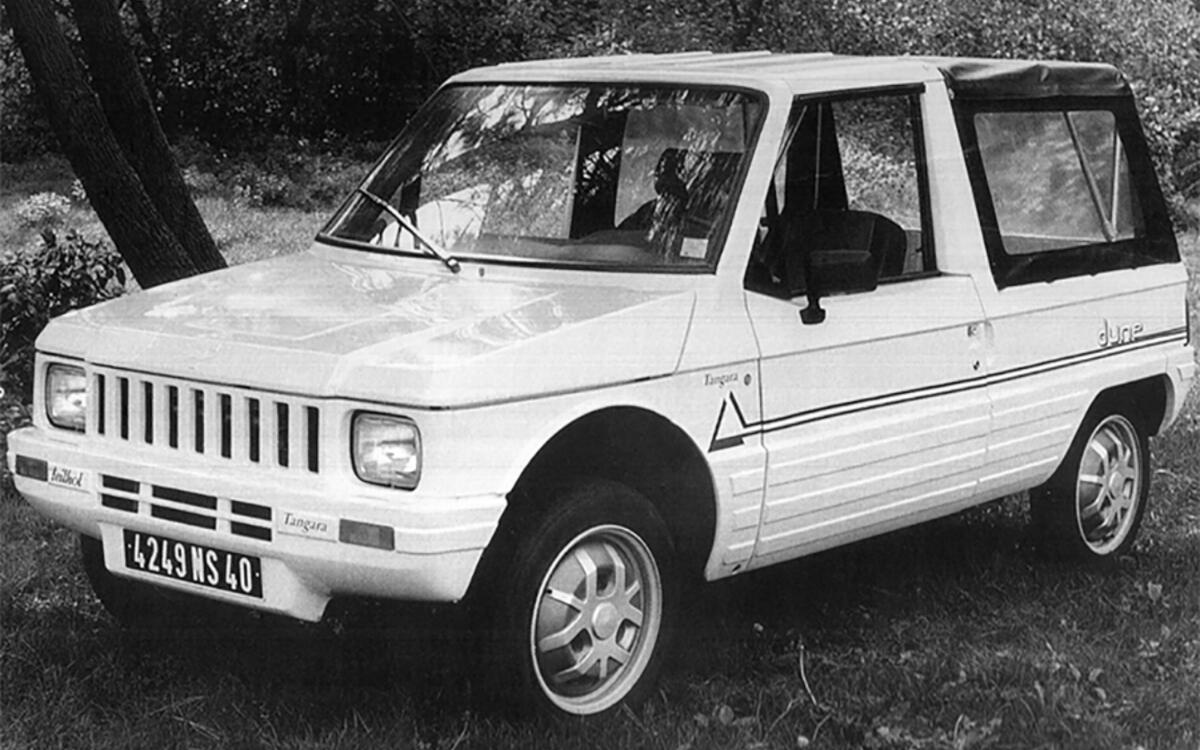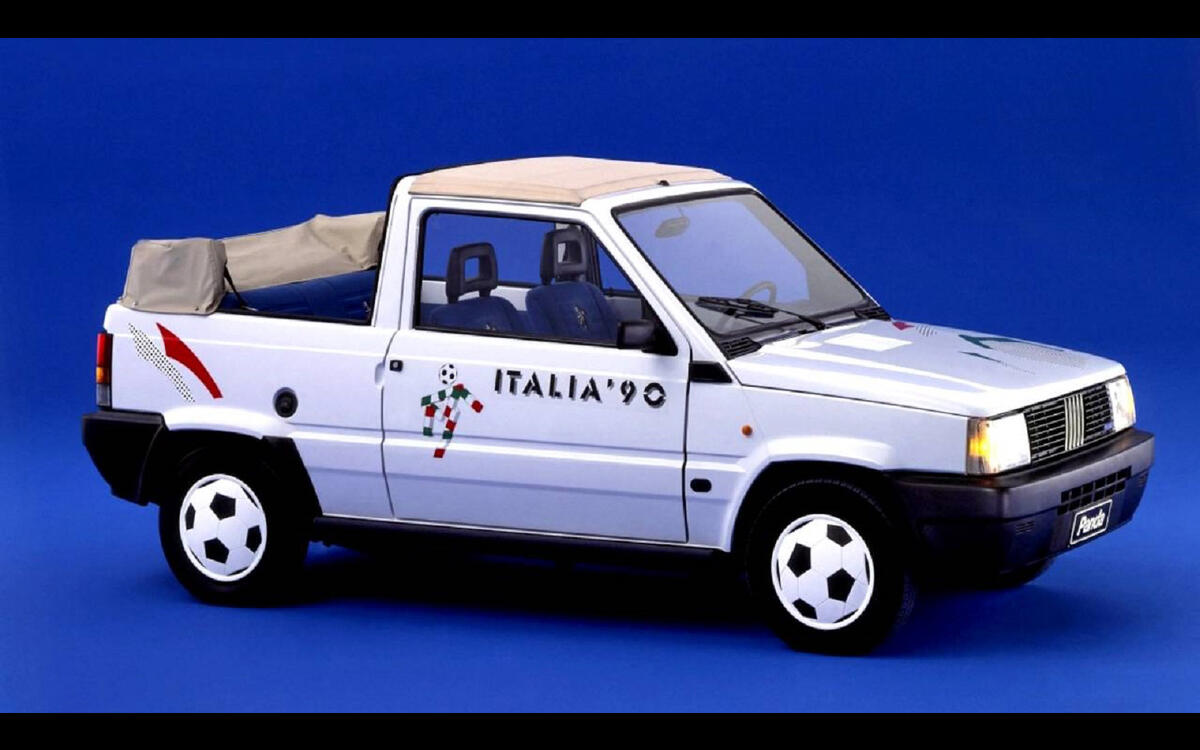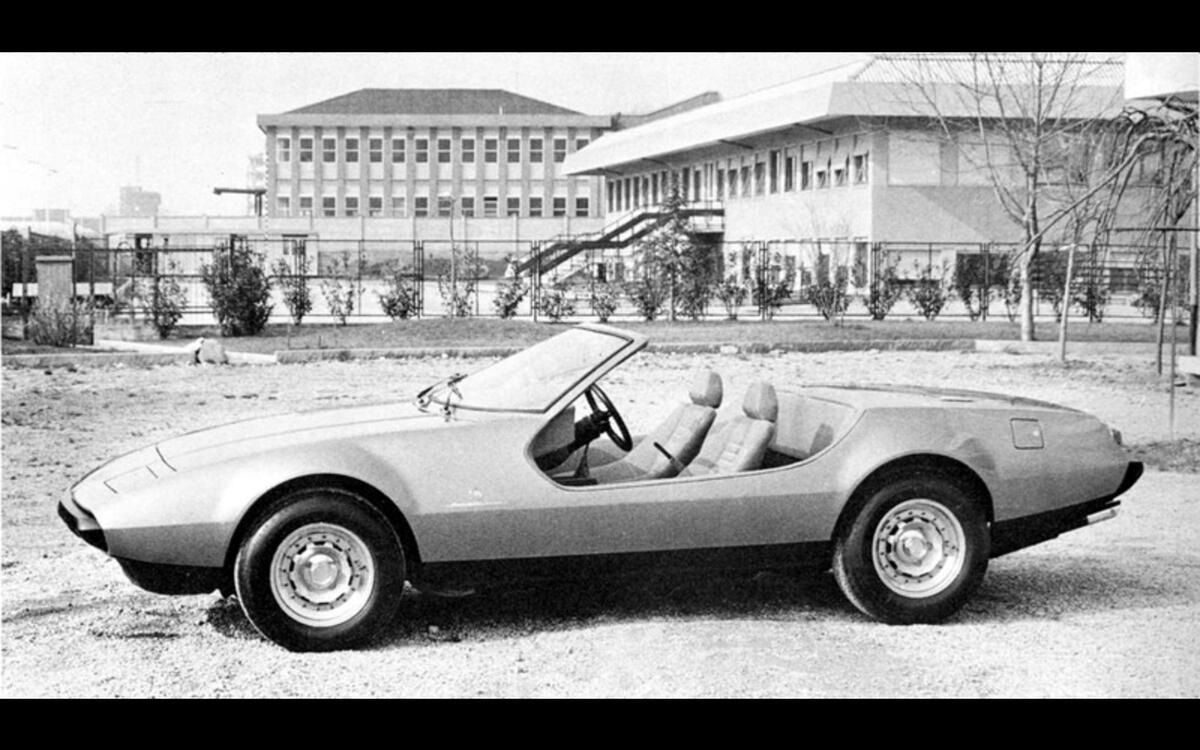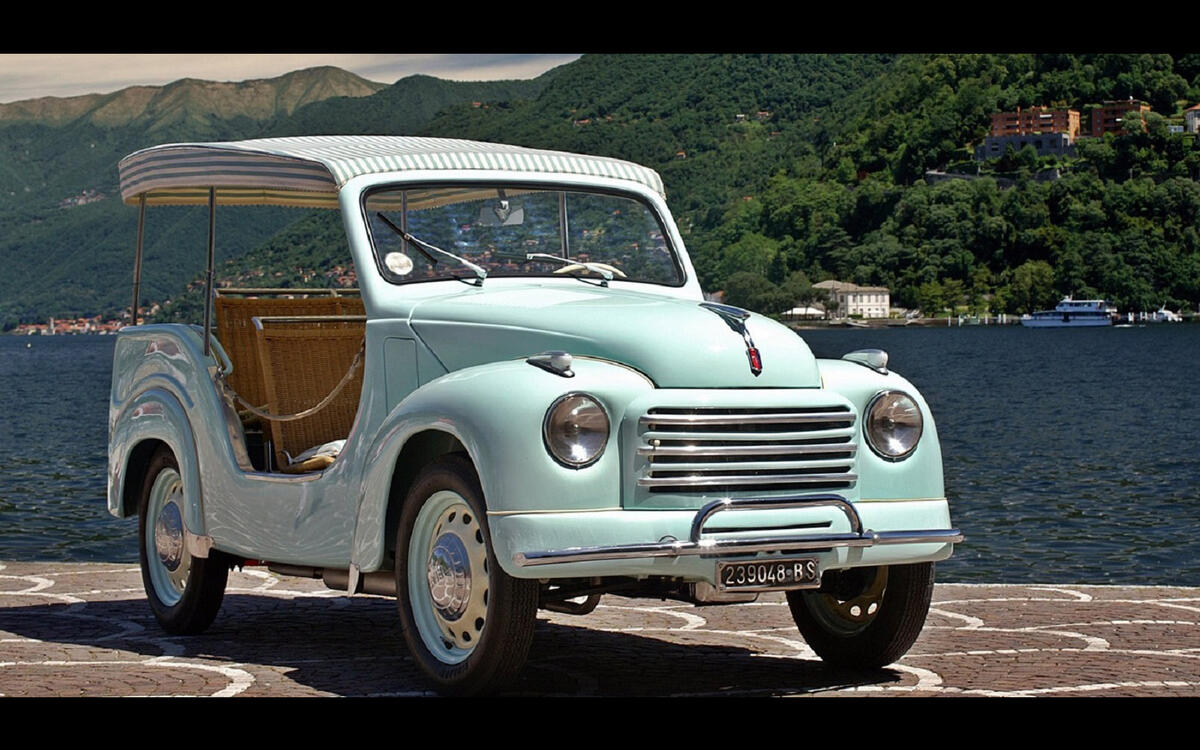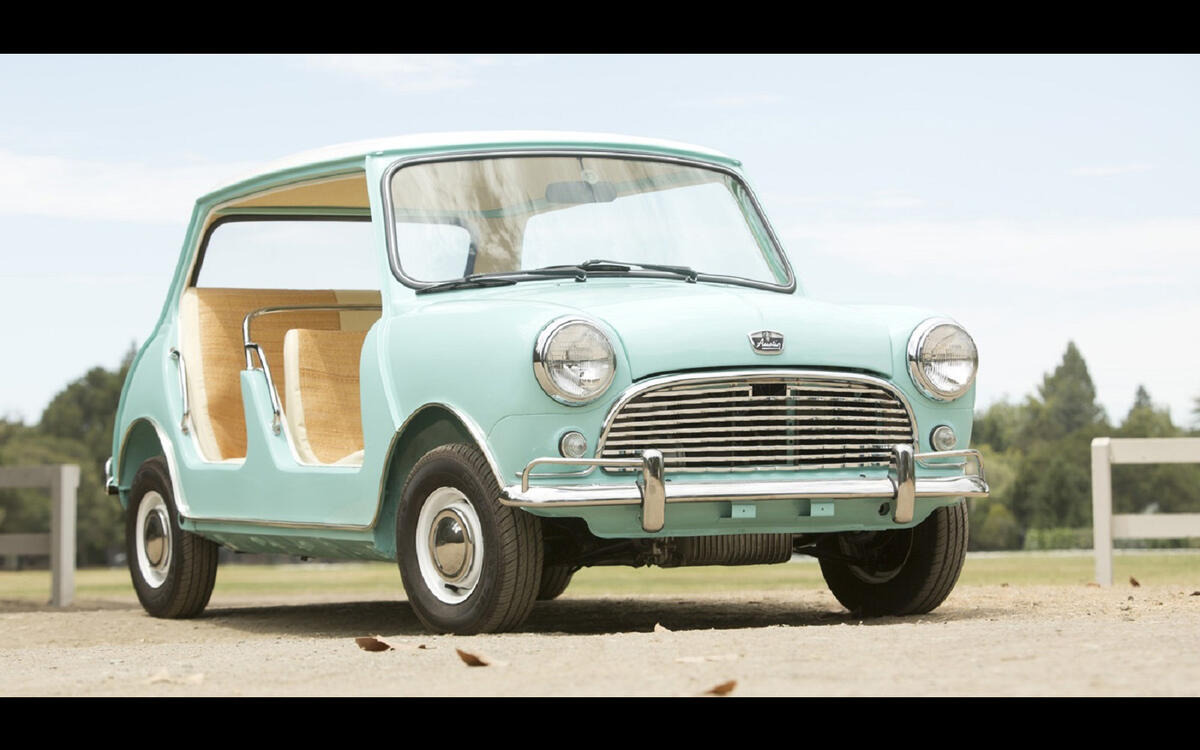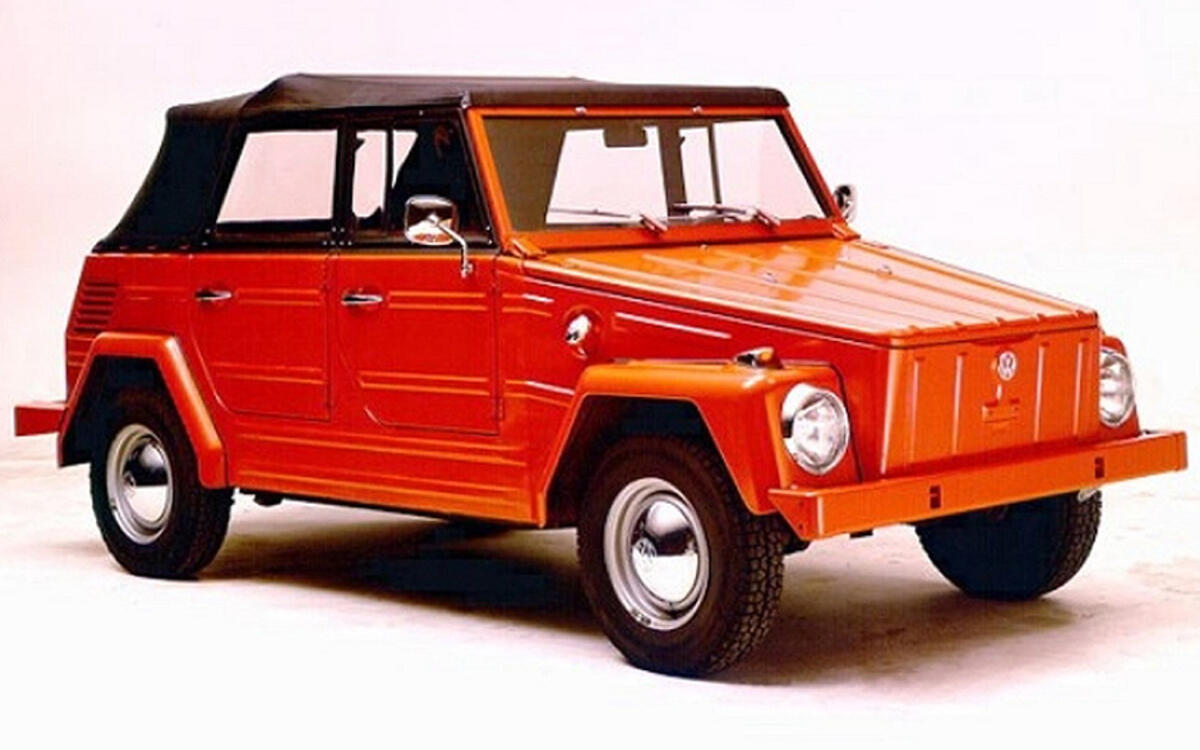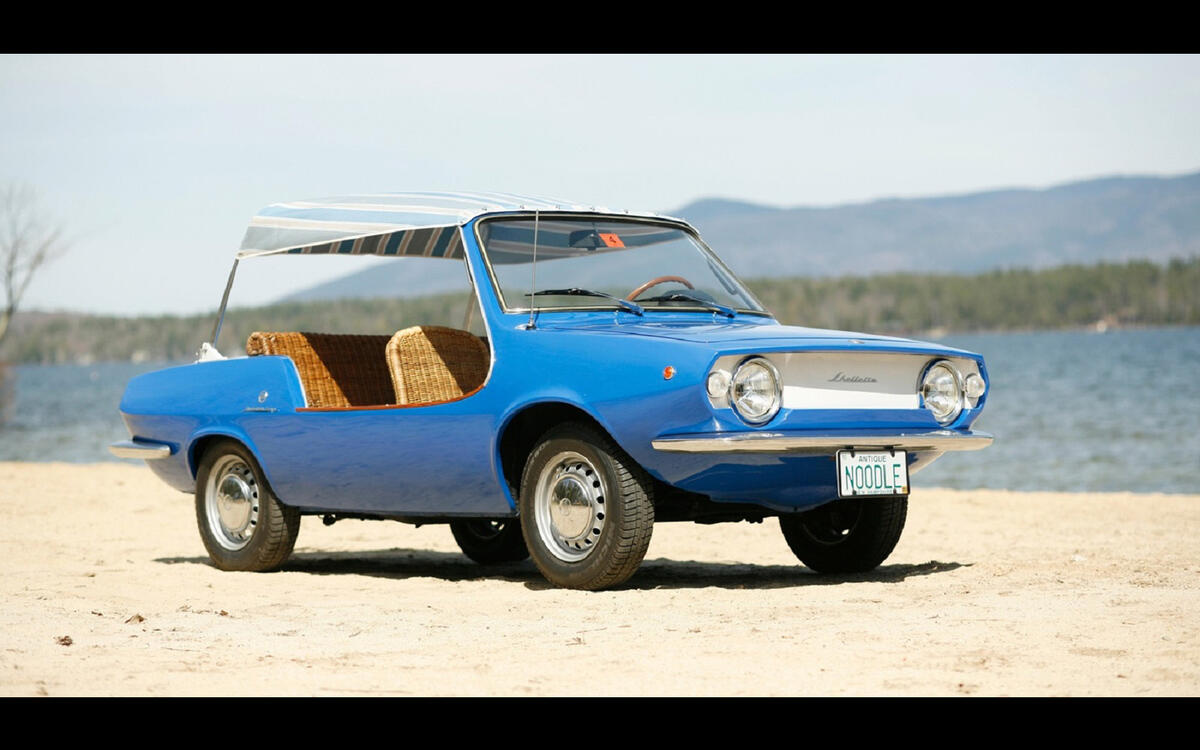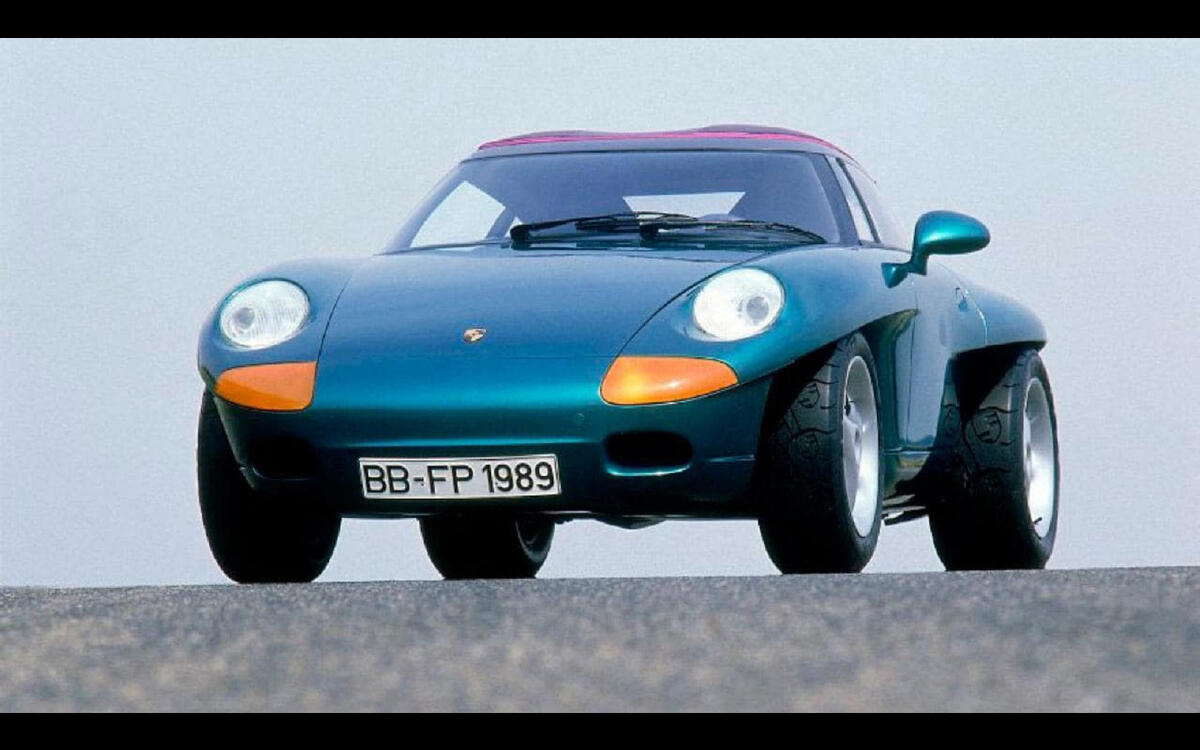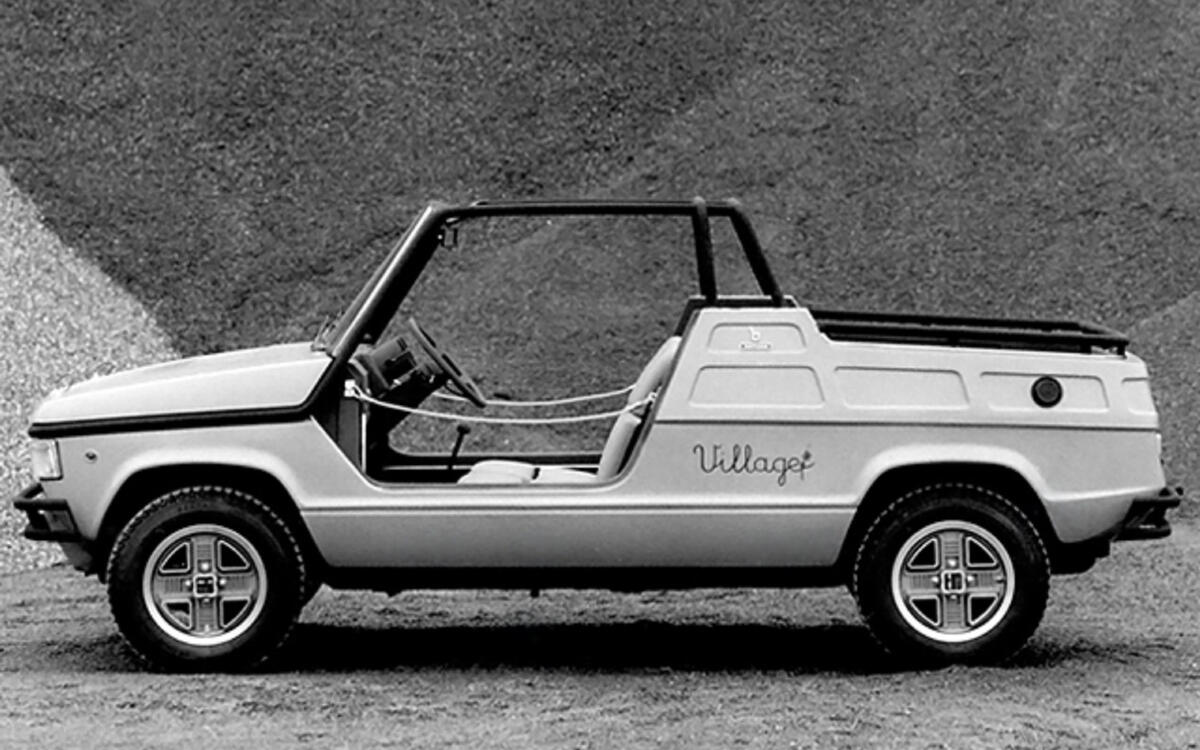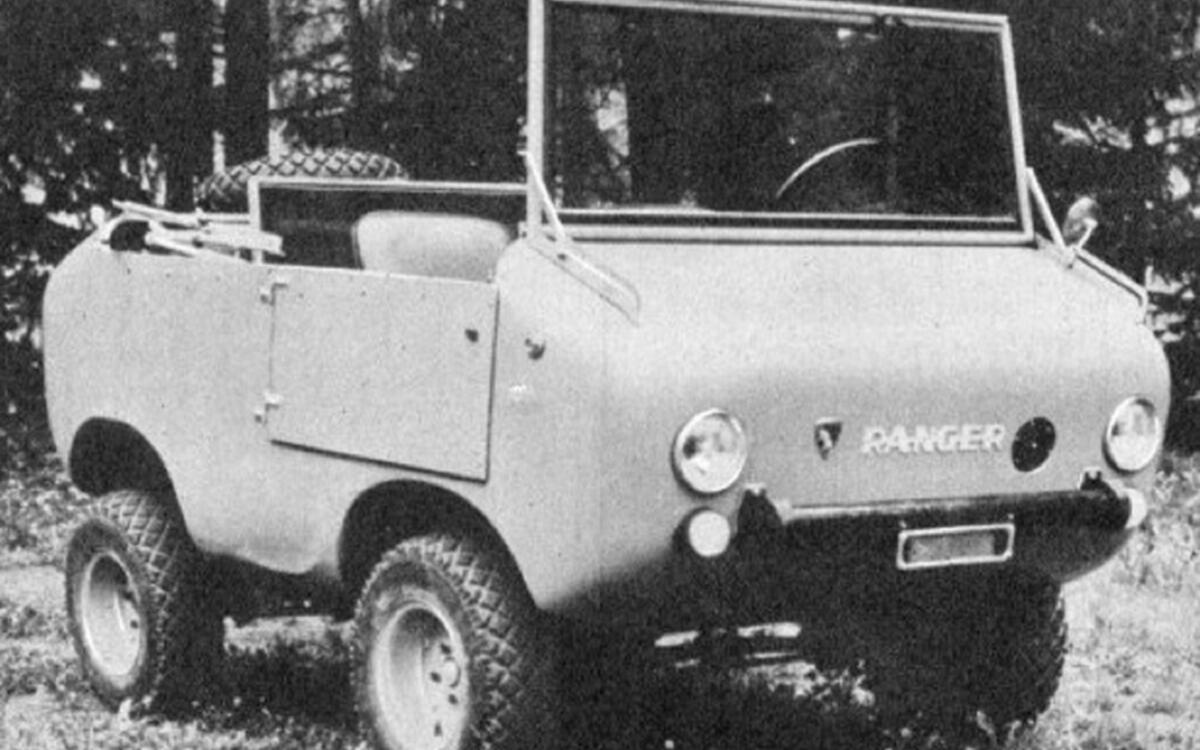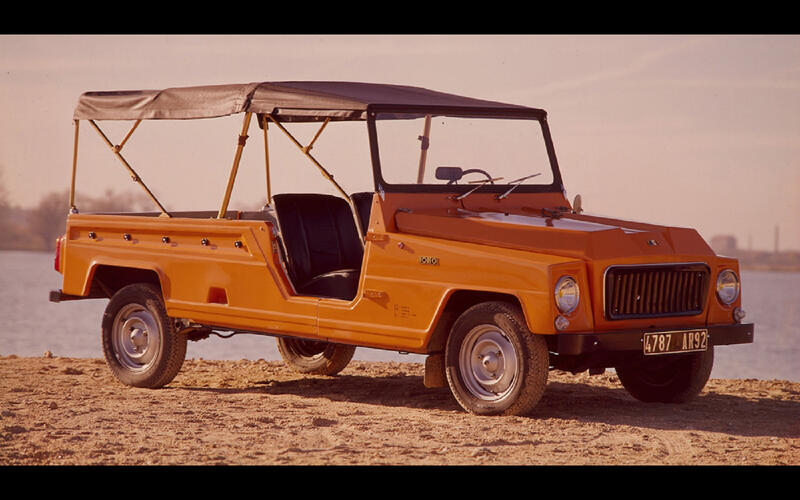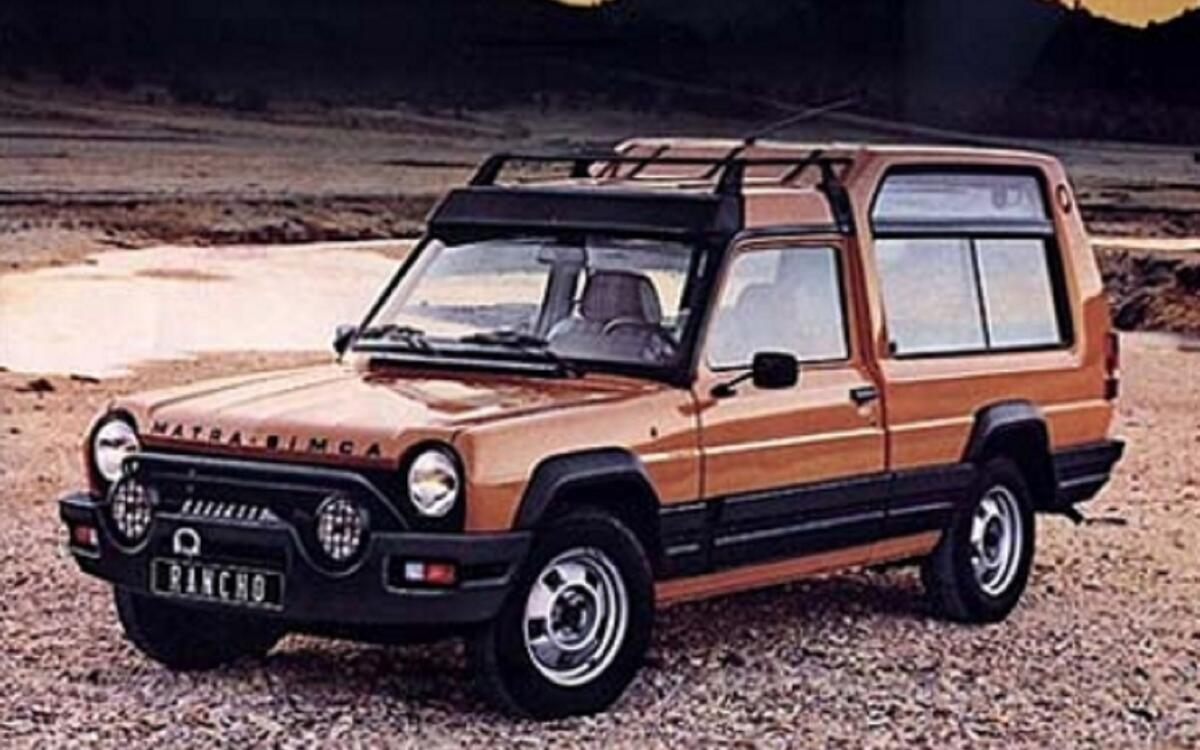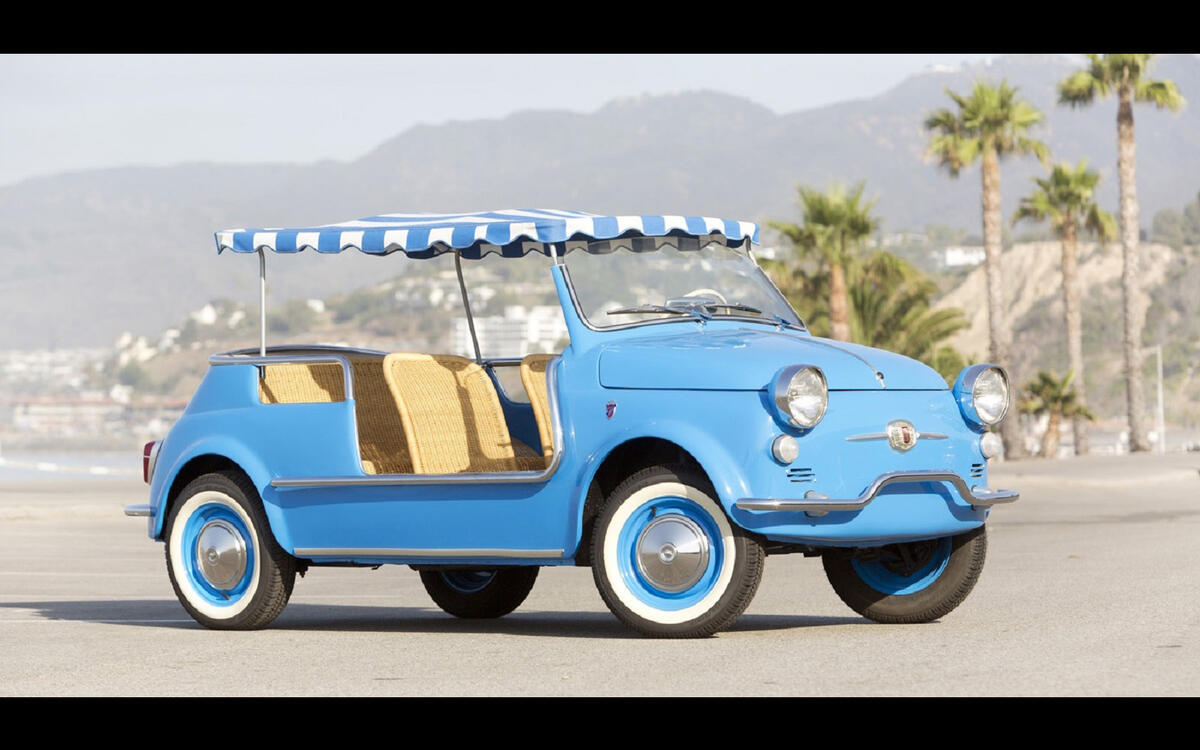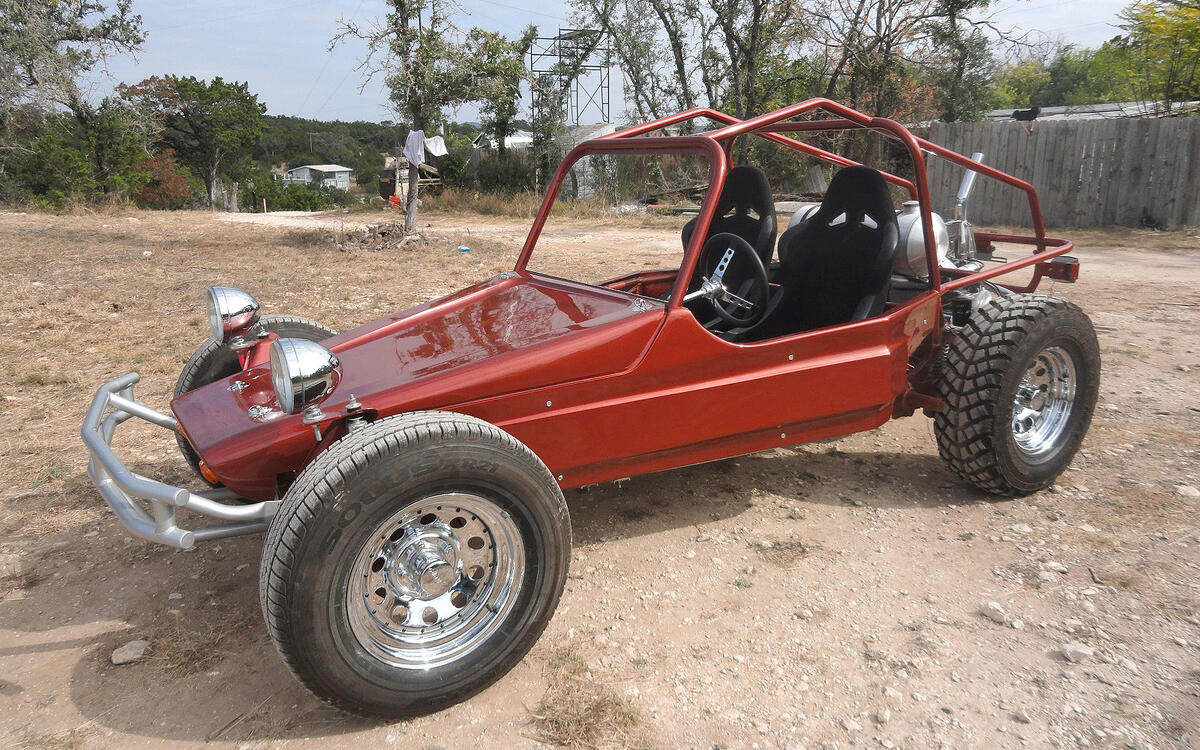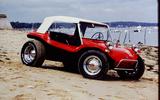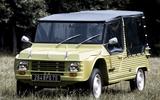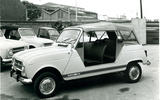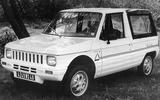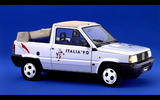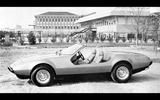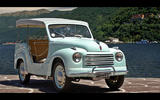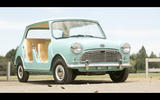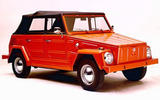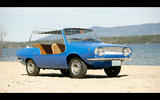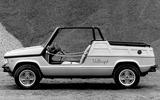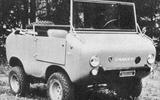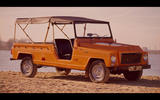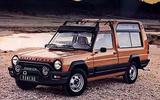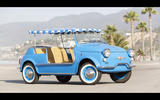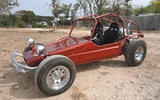 Slide of
Slide of
Summer looks like it might finally be here.
So now's a good time to think about cars you might take to a beach.
Beach cars started out as the playthings of the rich and famous, a way to get from one luxury destination to another while on holiday at the seaside. The idea was then popularised by the beach buggy in the USA that made use of the Volkswagen Beetle. What all beach cars have in common is a simplicity of design and purpose that makes then the ideal way to get about on sand. Here are our favourites:
 Slide of
Slide of
VW-based beach buggy
This is where the name ‘beach buggy’ all started, with the Meyers Manx. Designed by the Californian Bruce Meyers and on the road in 1964, it used a shortened Volkswagen Beetle chassis and engine. It also made the most of glassfibre as a new material that allowed small companies to make swoopy bodies cheaply.
The result was intended for desert racing, but kit form versions soon found favour with California’s surf crowd. It spawned dozens of imitators, yet the original beach buggy is one of only a few still available today.
 Slide of
Slide of
Citroën Mehari
Unlike its USA beach buggy counterpart, the Citroën Mehari used an ABS plastic moulded body made by SEAP and mounted on a Dyane 6 chassis, which is almost identical to a 2CV’s. Launched in 1968, the Meharis was even more basic than its Tin Snail sister thanks to a stick and canvas roof and cut-down doors. This made it ideal for hosing out sand and muck, while the long travel suspension and light weight meant it could easily cover rough ground.
 Slide of
Slide of
Citroën E-Mehari
With retro-styling all the rage, Citroën took the unusual step of plundering its back catalogue for the Mehari. The result was the E-Mehari in 2016 that took elements of the original and the current C4 Cactus to create something only Citroën could dream up. Even more divisively, the E-Mehari was launched as an electric car with a 68bhp motor and 124-mile range. A brittle ride and hefty price tag meant this updated version found few takers.
 Slide of
Slide of
Renault 4 Plein Air
There was definitely something in the air around Paris in 1968, and we don’t mean rioting. How else can you explain Renault launching its 4 Plein Air at just the same moment Citroën revealed the Mehari. The unlikely Plein Air was built by Sinpar from a converted standard 4 Berline. All of the doors were removed and a simple side panel installed.
Around 500 were built, with Renault selling a DIY kit afterwards for anyone who wanted to create their own. Sinpar also went on to built a four-wheel drive Renault 4.
 Slide of
Slide of
Toyota FJ Cruiser
Part retro SUV, part urban 4x4, the Toyota FJ Cruiser was shown as a concept at the Detroit auto show in 2003 and was an instant hit. From that moment, production was a certainty and so it happened in 2006 the first generation FJ went on sale in the USA.
It was never been officially imported to Europe, but Japan received right-hand drive models in 2010 and they made their way to Australian and New Zealand too. Underneath the FJ lies the chassis and running gear of a Tacoma pick-up, so the FJ is also very useful off-road.
 Slide of
Slide of
Teilhol Tangara
When production of the original Citroën Mehari ended, specialist car maker Raoul Teilhol saw a gap for an updated version. Teilhol had form in this area with the Renault Rodeo, but the Tangara used the 2CV as its base and Citroën agreed to supply the chassis and engine. Modern styling and bolt-on glassfibre panels should have helped sales, but only 2000 Tangaras were completed, including 400 for the French military.
 Slide of
Slide of
Fiat Panda Convertible
Fiat had dabbled with the idea of an open version of its original Panda with large twin sunroofs, but it took Italian coachbuilder Maggiora to create a full drop-top. It retained the full doors and B pillar, so it was practical enough for year-round use.
Most ended up in Italian seaside resorts and a limited run of 50 were made to mark Italy hosting the soccer World Cup in 1990. There were also some 4x4 versions that make for a surprisingly able go-anywhere vehicle.
 Slide of
Slide of
Ferrari 365 GTC/4 Beach Car
Swiss firm Felber wasn’t afraid to wield the angle grinder when it created its Ferrari 365 GTC/4 Beach Car. As well as doing away with the coupe’s doors, the roof went and the sills were deepened to replace some of the lost strength from the body.
The result was distinctive but hardly the prettiest Ferrari. However, the interior was livened up with wicker seats and there was a modest soft-top to keep the rain off between harbour and lunch destination.
 Slide of
Slide of
Fiat Topolino Mare
Wealthy Italians would not normally bother with a Topolino, but when it’s been converted into a Mare it becomes an altogether more attractive proposition. The popularity for these cars started in the 1950s as a way to travel between private yacht and beach. Cut-down doors allowed easy access, while the awning style hood kept the midday sun at bay.
Safety was taken care of by a rope where the doors used to be and the wicker chairs were comfier than they looked, honest.
 Slide of
Slide of
Austin Mini Beach Car
Following in the sand tracks of Fiat’s Topolino Mare, Austin decided to have a crack at its own beach car in 1961 using the Mini as the base. It was an obvious choice and around 15 were produced, with a single right-hand drive model made that was loaned to the Queen and briefly used at Windsor Castle.
To retain some body rigidity, the British car kept part of its B pillar and the roof remained in place. However, like its Italian inspiration, the seats were made from easy to clean wicker.
 Slide of
Slide of
VW The Thing
Officially known as the Type 181 or Trekker, Volkswagen’s in-house take on the beach buggy earned the name The Thing in its biggest market, the USA. Built on the Beetle floorpan and with styling inspired by the World War II Kübelwagen, The Thing was very practical and decent off-road.
The first were supplied to the German military, but civilian sales got underway in 1971. Production ended in 1983 after 90,883 versions had been built, with more than half going into armed services when new.
 Slide of
Slide of
Fiat Shellette
With a client list that includes BMW, Lancia and Maserati, Michelotti is a coachbuilder with provenance. So, the Shellette was something of a whimsy for the Italian firm but one it took no less seriously than other cars it built. Based on a Fiat 850, there’s almost nothing of the original bodywork left on the Shellette, which oozes period charm. That explains why Jacqueline Onassis and the Dutch royal family each had one of the 80 made.
 Slide of
Slide of
Porsche Panamericana concept
Looking like a Porsche 911 from a television cartoon, the Panamericana was Porsche’s 80th birthday present to its boss, Ferry Porsche. Displayed at the 1989 Frankfurt motor show, it used a 964 Carrera 4 as the base and came with unique Speedline alloy wheels shod in chunky tyres to gain ground clearance.
There was also a zip-out fabric roof and waterproof upholstery. What Ferry thought of the car is unrecorded, but the Panamericana went on to influence the shape of the 993 generation of 911, which first appeared in 1993.
 Slide of
Slide of
Fiat 127 Village
The Fiat 127 Village was one of the best resolved beach car designs of the 1970s, as you’d expect from a car styled by Bertone. Yet this four-seat, dropside convertible never made it past the concept stage after it was shown at the 1974 Geneva motor show.
With a roof that was easily removed and interior that could be configured as a passenger car or van, it was very much in the mould of the Citroën Mehari, but Fiat didn’t fancy it so it was stillborn.
 Slide of
Slide of
Ferves Ranger
The Ferrari Veicoli Speciali has no connection to the supercar maker and instead its name was contracted to Ferves. The Ranger arrived in 1966 with four-wheel drive and power from Fiat 500, while the miniscule wheelbase helped give it goat-like cross-terrain ability.
Fewer than 1000 Rangers were made, but most came with four seats rather than the two-seat pick-up configuration, so it could take you and your mates to further flung beaches than most other cars.
 Slide of
Slide of
Renault Rodeo
The Renault Rodeo enjoyed a 27-year lifespan that started in 1970 when the first was built based on the 4 van’s floorpan. It retained front-wheel drive and 845cc engine, but the boxy body was made from plastic and offered a fully open cabin. Only a slender central roll bar offered any protection and the doors were replaced by a rope to comply with regulations. A more powerful version arrived in 1972 with the 1108cc engine and a handful of 4x4 Rodeos were made.
 Slide of
Slide of
Matra Rancho
The Matra Rancho can lay claim to inventing the crossover segment that’s so popular now. It touted all of the off-road looks and attitude of a proper 4x4, yet it was based on the humble Simca 1100. Tough plastic mouldings around the wheelarches and lower body gave it some resistance to driving off the beaten track, but front-wheel drive only meant it was best left in the car park rather than on the beach.
Perhaps more importantly, it paved the way for its designer Antonis Volanis to go on and create the first Renault Espace, Europe's first MPV.
 Slide of
Slide of
Fiat Jolly
There have been several Fiats given the Jolly name and all have been designed by Ghia. It created beach cars based on the 500, 600 and even the Multipla for the likes of Aristotle Onassis and Yul Brynner to potter between their Mediterranean villas, yachts and the seafront.
They all did away with doors in favour of a cut-down side opening, often with chromed rails to hold on to. Wicker seats were another Jolly trademark.
 Slide of
Slide of
Sand rails
If you want to drive on the beach rather than just to it, you need a sand rail. They come in all shapes and sizes, but the original idea took advantage of the Volkswagen Beetle’s rear-mounted engine to gain superb traction for racing in the Baja California Desert.
A lightweight chassis of tubes doubles as a roll cage and that’s about it. Modern rails can be bought with mid-mounted V8s and four seats, but earlier designs such as the Acme Car Company’s pictured are the purest.
As summer coaxes finally into life, let's take a look at the cars that were perfect for taking to the beach
Advertisement



